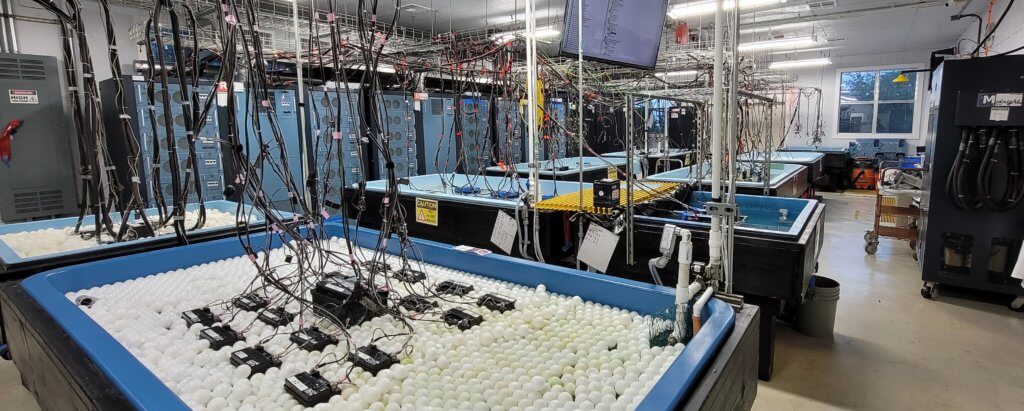
CBI has invited member company Black Diamond Structures, LLC to join our guest blog series with a focus on their advanced nanomaterials science and battery testing activities. The core mission of CBI is to undertake research to improve the performance of lead batteries for a diverse number of applications in different ways, such as enhancing DCA performance and cycle life. We work with our global membership throughout the lead battery supply chain, including materials suppliers, to support innovation in the technology and promote the crucial role lead batteries play, now and for the future.
At Black Diamond Structures, LLC (BDS) we let our MOLECULAR REBAR® (MR) technology do the talking. With dozens of global customers adopting our application-specific products for their automotive, storage, and traction needs, MR’s message is being heard loud and clear. But how do we give our discrete, high purity, carbon nanotube-derived technology its “voice”? Through rigorous internal testing and the dedicated support of our development partners.
The demands made of lead batteries have never been higher. With lithium-based competition rising and environmental factors playing a role in Europe and Asia, lead technology must adapt to defend its incumbency in many applications. Thankfully, the Consortium of Battery Innovation is leading the way with its technical roadmap and promotion of the vital role lead batteries play across many applications. To meet demands, the industry is leading two key initiatives:
BDS supports both these initiatives with our in-house testing capabilities and our MOLECULAR REBAR® products.
New testing specifications set by leading institutions are aggressive, often requiring complicating programing, advanced hardware, and levels of sensitivity not often heard of in the industry. Although protocols like the “New Key Life Test, or nKLT” (working name) from CENELEC, SAE-J2801, and various “Run-in” DCA tests are carefully crafted to provide accurate prediction of field performance in as short a time as possible, they present a problem: few of the world’s battery manufacturers have the capability or circuit availability to execute them.
Enter Black Diamond Structure’s battery testing facility. In our Bitrode-equipped laboratory (129 channels, 25-1500 A, 0-20 V, -25-75 oC), we are capable of running the entirety of the world’s testing procedures to help our customers prove that their MR-enhanced batteries are capable of transcending the needs of the industry. For rapid verification of the MR-driven improvements, our data scientists leverage cloud computing to generate reports and cross-reference findings across our extensive database.

MOLECULAR REBAR® technology improves chargeability, consistency of performance, cycle life, warranty return rates, and, more recently, corrosion resistance (PbAC product line) but only through constant optimization and material-screening in our 2 V cell facility can we continue to provide improvements that help our customers develop the next generation of world-class batteries. Our research has provided a new EFB solution through a collaboration with Addenda Corporation which combines our technology with a customized expander to provide the highest EN 50342-6 DCA measurements ever achieved in our cell lab while reducing water loss by >50% when compared to a control. Electrical cell testing is corroborated by materials analysis (x-ray diffraction, mercury porosity, and SEM) which helps us understand our mechanism of action to inform product development.

Our type of research-driven, collaborative product development differentiates Black Diamond Structures from other material suppliers and, we believe, is the fastest and only way to ensure a bright future for the lead battery industry.
